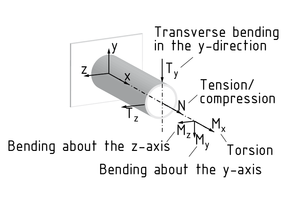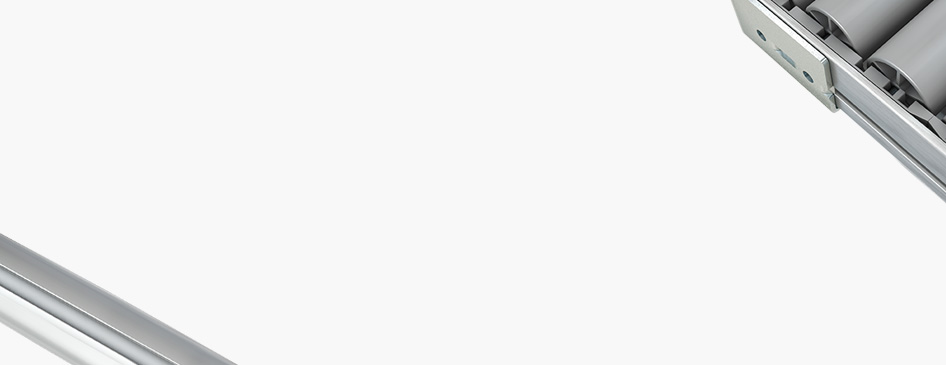
Choose one
or multiple languages
0,1,1
- German
- English
- Chinese
- Spanish
Superposition

In Mechanics, superposition refers to the combination of forces F and moments M acting on a system in different directions. The Vector sum of all forces forms a resultant that represents the action of the combined forces.
A composite load on a component is created, for example, on the superposition of the following loads:
- Tension/compression
- Transverse Bending in the y-direction
- Transverse bending in the z-direction
- Bending about the y-axis
- Bending about the z-axis
- Torsion
Superposition of e.g. the two basic load types - transverse bending in the y- and z-directions - subjects the component to oblique bending and thus a composite stress.
Superposition

Die Superposition bezeichnet in der Mechanik die Überlagerung von unterschiedlich gerichteten, wirkenden Kräften F und Momenten M an einem System. Die vektorielle Summe aller Kräfte bildet eine Resultierende, die die Wirkung der gesamten Kräfte repräsentiert.
Eine zusammengesetzte Belastung an einem Bauteil entsteht zum Beispiel bei der Superposition folgender Belastungen:
- Zug/Druck
- Querkraftbiegung in y- Richtung
- Querkraftbiegung in z- Richtung
- Biegung um y-Achse
- Biegung um z-Achse
- Torsion
Überlagern sich z. B. die beiden Grundbelastungsarten, Querkraftbiegung in y- und z-Richtung, erfährt das Bauteil eine schiefe Biegung und somit eine zusammengesetzte Beanspruchung.
叠加

在力学中,叠加指在同一个系统中不同方向上的作用力 F 和力矩 M 的联合作用。所有力的矢量和形成了一个合力,反映了力的联合作用效果。
例如,建立构件的复合载荷,反映了下列荷载的叠加效果:
拉力/压力
在 y 轴方向的横向弯曲
在 z 轴方向的横向弯曲
以 y 轴弯曲
以 z 轴弯曲
扭转
例如两个基本载荷类型的叠加 – y 轴方向和z轴方向的横向弯曲 - 使构件发生斜弯并产生复合应力。
基本载荷类型
Superposición

En mecánica, la superposición se refiere a la combinación de fuerzas F y momentos M que actúan en un sistema en direcciones diferentes. La suma de los vectores de todas las fuerzas forma una resultante que representa la acción de las fuerzas combinadas.
Una carga compuesta de un componente es creada, por ejemplo, por la superposición de las siguientes cargas:
Tensión/compresión
Flexión transversal en la dirección y
Flexión transversal en la dirección z
Flexión alrededor del eje y
Flexión alrededor del eje z
Torsión
La superposición de, por ejemplo, los dos tipos básicos de carga, flexión transversal en las direcciones y y z, somente el componente a una flexión oblicua y, por lo tanto, a un esfuerzo compuesto.
Tipos básicos de carga
